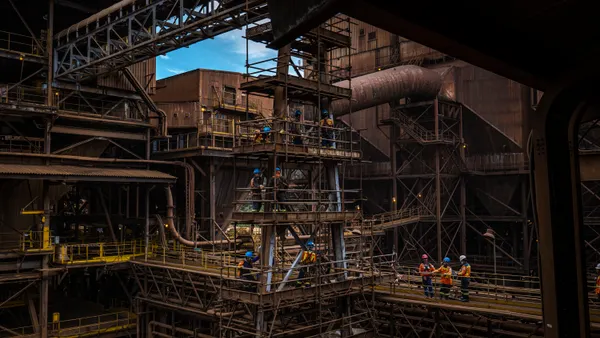Ah, the old days! Life was simpler then. In the world of supply chain, everything, it seems, was black & white, with no shades of gray. Things worked, or so we thought. Then technology exploded and markets became global. Moore’s Law was prescient, Big Data became a driving force and what once seemed to work, no longer did. At least not efficiently.
The old days aren’t that long ago, just a decade or so. How did supply chain pros, many in the prime of their careers, adjust? How do they continue to do so as technology continues to expand? How can organizations interest young, tech-savvy people in supply chain careers?
Suddenly, supply chain management became more complex than ever. And the number of people who could handle it were few.

Supply Chain Dive
Supply chain industry veteran Bill Michels, CEO of Aripart Consulting in Scottsdale, AZ, says supply chain emphasis has evolved from cost reduction to speed to market and value to the customer.
“There have been a lot of changes. There’s more and more automation; transacting purchases with artificial intelligence (AI) is a radical change,” he told Supply Chain Dive. “Will you need people doing these things? [Currently] you find a supplier, put out the RFIs (requests for information) and get sourcing recommendations. I don’t know if that will be there in five or 10 years.”
Jobs are there. Where’s the talent?
A March 2017 study from Supply Chain Insights, Supply Chain Talent: Evolving Across Generations reveals what supply chain pros believe are the top skills required in the industry. Most important are problem solving (64% of respondents), strong analytical skills (58%) and the ability to see the big picture (50%).
That’s all well and good, but who’s going to do it? A University of Maryland/DHL study of the industry shows found the demand-to-supply ratio of supply chain jobs to qualified individuals is 6 to 1. Suddenly, supply chain management became more complex than ever. And the number of people who could handle it were few.
Ironically, a technology explosion and global expansion are the key drivers. Big Data may put early adopters at an advantage, but without talented analysts, Big Data is just a pile of numbers; meanwhile, misinterpreted data can lead to devastating business interruptions.
What’s an organization to do?
There are four generations in the workforce today – ranging from the Greatest Generation (born between 1930 and 1945), Baby Boomers (1946-64) to Gen X-ers (1965-84) and Millennials (1985-2004) – but by 2025, the workforce will be completely different. A U.S. Bureau of Labor Statistics report says, “instead of entering the labor force, baby boomers are retiring in large numbers and exiting the work-force. Once again, the baby-boom generation has become a generator of change, this time in its retirement.”
"There have been a lot of changes. There’s more and more automation; transacting purchases with artificial intelligence is a radical change,”

Bill MIchels
CEO, Aripart Consulting
Supply chains will feel the pain. In the $26 trillion supply chain industry, 25 to 33% of the workforce already is at or past retirement age, according to Lora Cecere, founder and CEO of research firm, Supply Chain Insights. As the “boomers” retire and Gen-Xers settle into place, organizations need to be thinking of ways to make supply chain “sexy” and attractive for millennials and college business majors.
Gartner has laid out four steps to help achieve this:
- Create a culture that mentors millennials.
- Develop career development plans from the start.
- Give millennial talent access to cross-functional programs.
- Use great internship experiences to attract millennial talent.
Internship opportunities and other pre-professional opportunities are expanding rapidly, especially as many top business schools add the discipline.
“Supply chain programs at Penn State, Tennessee, Michigan State and others are becoming increasingly popular,” David Landau, executive vice president at Florida-based Cloud Logistics, and former VP product management at Manhattan Associates told Supply Chain Dive. “People are intentionally entering supply chain. [At job fairs] all of the supply chain executives surround college sophomores for internships or seniors for jobs, and they don’t have to explain supply chain to them.”
“We had a customer who hired an intern [during school breaks] and he got to know the operation,” Laundau added. “After he graduated, he came in full-time as a 22-year-old. His acceptance and trust within the organization was high because of what he did as an intern. That will have a positive impact on the workforce—a generation raised on technology changes.”












